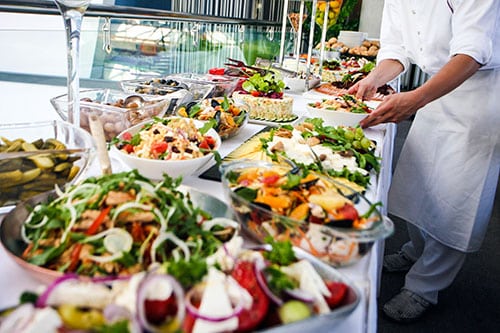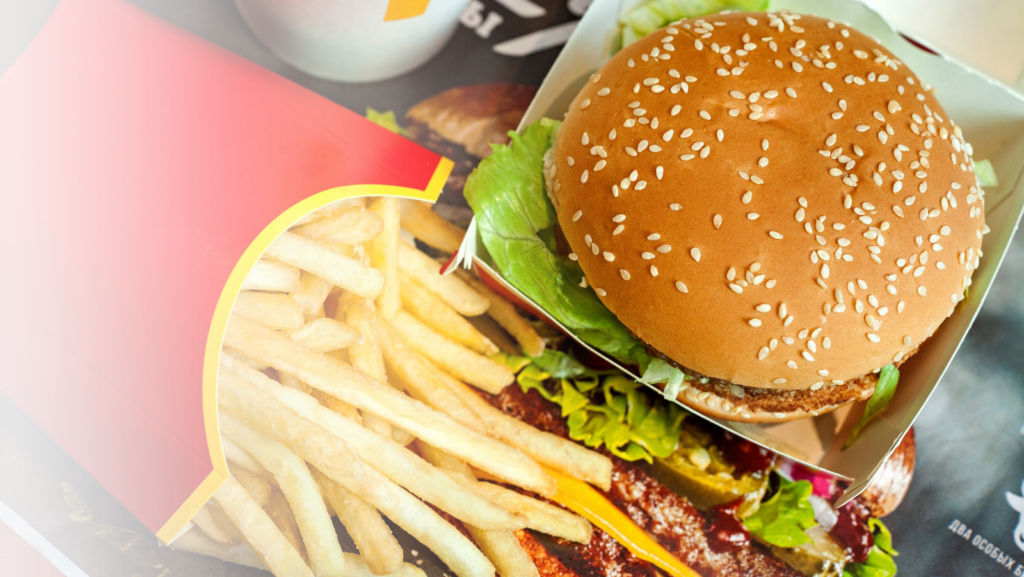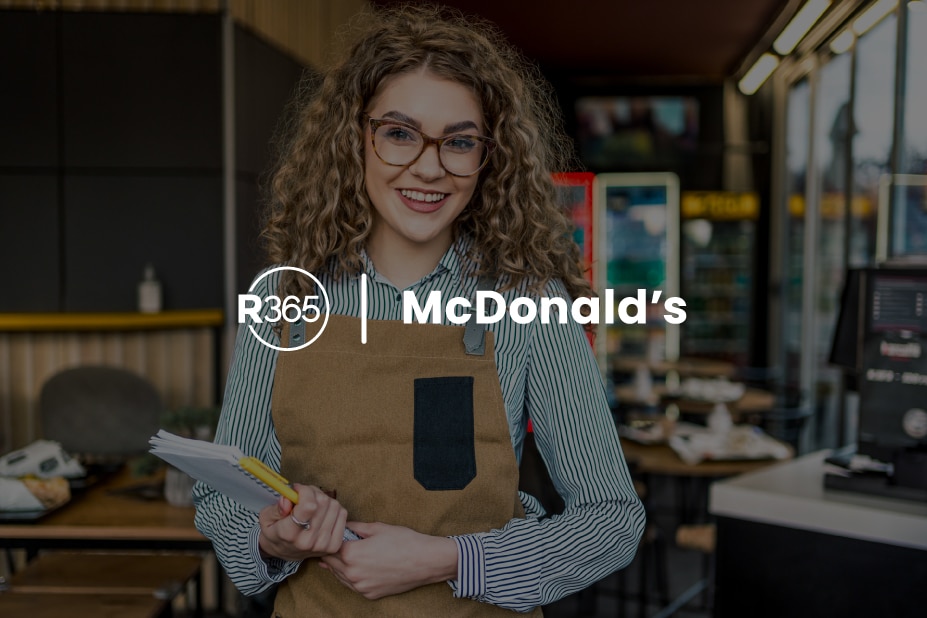Food cost is one of the biggest operating expenses for a restaurant business. With perishable ingredients and fluctuating sales, controlling food costs in restaurants can be extremely challenging.
When you misjudge ordering or overspend on food cost, it directly affects your bottom line. Luckily, there are strategies for controlling food costs that you can apply to your restaurant operation.
Below are some common questions regarding food costs and strategies for reducing the food cost in your restaurant.
Check out other blogs in this food cost management series
Learn how to calculate recipe costs for your restaurant
Learn the difference between recipe costing vs. food costing
Food Cost Percentage Definition
Food cost percentage is defined as the total cost you spend on ingredients divided by the total sales on that food. You can calculate your food cost using our food cost calculator, but let’s walk through an example below.
How do you calculate food cost percentage?
Let’s calculate the monthly food costs for a restaurant called The Krusty Krab, a fast food operation that sells Krabby Patties under the sea. The restaurant starts the month with $2,000 of inventory left over (beginning inventory cost). It purchases $8,000 in ingredients for the month (purchasing cost). It has $3,000 left over at the end of the month (ending inventory cost). Its total sales for the month are $24,000.
- Beginning inventory value= $2,000
- Purchases= $8,000
- Ending inventory value= $3,000
- Total food sales= $24,000
We can put these numbers into the equation below to calculate The Krusty Krab’s food cost percentage:

The Krusty Krab has a food cost percentage of 29.2% for the month, which is about average in the fast-casual market. To calculate your restaurant’s food cost, use the calculator found here.
What is a profitable food cost percentage?
We use an industry benchmark of 30% to give you an idea of where you stand, but there is no steadfast rule on what your food cost percentage should be, as it heavily depends on the type of restaurant you’re running. Most fast-casual and full-service restaurants will target around 28-30%, while a pizza business target might be much lower, around 18-22%. For a fine-dining operation, which uses high-quality ingredients and more of them, food cost percentage can be much higher, upwards of 40%.
While it’s useful to know industry averages so you can benchmark against them, it’s more important to think of your food costs as a moving target that you can always improve upon. This means checking your food cost percentage regularly across different periods (e.g. per week, month, quarter) and finding areas you can make changes through better inventory management and forecasting.
How do I optimize my food cost percentage?
There are many ways to optimize food cost percentage. One way is through restaurant inventory management, which monitors what ingredients come into your restaurant, what is leaving, and what is left over. Inventory tracking is an essential restaurant task – with more efficient food, beverage, and supply orders, you reduce costs and increase margins.
While some parts of restaurant inventory management can be automated, some inventory must be done by hand. Manually counting food item quantities to account for potential areas of inventory loss (wait staff errors, kitchen waste, or incorrect preparation) can be time consuming, but necessary. A restaurant inventory management software that is accessible on any device, even mobile, can streamline this part of the inventory process.
A robust restaurant management software platform with POS integration can automatically track theoretical inventory based on sales. If your software offers end-to-end inventory management, you can automate invoice uploading, recipe tracking, recorded stock counts, and auto-updated menu item prices, helping you calculate food cost in real time.
Here are a few strategies you can use to optimize your food cost percentage.
Automate Manual Processes: Forecast sales year-round
Customized forecasting based on historical data helps you improve restaurant operations by reducing food costs over time. Automating critical tasks like tracking and collecting data for forecasting can better manage food cost controls.
Customizable restaurant management software allows you to set a sales forecast by location and period. By comparing daily sales trends between this year and last year, automated forecasting drives the “smart stuff” in restaurant business operations. Using past sales data to predict upcoming sales informs smart inventory decisions, and smart prep driven by sales forecasts enables food prep with less food waste. Automated sales forecasts can even help you create employee schedules that optimize your labor cost.
Use Inventory Tracking to Reduce Waste: Purchase inventory at the right level
One of the most direct ways to reduce food cost is to avoid purchasing what you don’t need. With data-driven suggestive ordering, you and your managers are better able to purchase inventory at the right level to reduce order waste.
Smart ordering and receiving allows you to leverage ordering suggestions, informed by historical and forecasted sales and inventory data.
Recipe Costing: Track usage and yield on each food item
Lowering your food costs starts with understanding the cost of your food. Recipe costing breaks down the cost details of menu items to portion size and individual ingredients, calculated to the penny.
Tracking each menu items’ recipe cost can help you optimize food usage and reduce food waste over time. With trends broken down by menu item or location, you can use recipe costing to save money by reducing incorrect portions, improper staff training, or employee theft.
Manual menu item costing is error-prone and unreliable. Adding an automated recipe costing system can accurately do the calculations for you.
Menu Planning: Price menu items properly
Menu engineering helps you control food costs by helping you maximize the profitability of your menu items. By collecting sales mix polling from your integrated POS and combining it with recipe costing in your restaurant management platform, you can instantly compare menu item popularity versus profitability.
By seeing what items are underpriced or overpriced, you can make food cost decisions about revising recipes or ingredients. For instance, if you are selling a large quantity of a low margin item, which increases your food cost percentage, you can make adjustments to either raise the menu price or adjust portion sizes. Menu engineering also enables you to seize menu opportunities, like promoting a menu item that is high margin but low sales. Understanding the balance of menu item popularity and profits enables data-driven decisions that lower the cost of food.
Food Cost Calculations: Track variances between actual vs. theoretical food costs
Truly understanding your food cost goes beyond a “food cost percentage” calculation. Tracking the difference between your theoretical and actual food costs allows you to make impactful changes to your food cost and bottom line.
Theoretical food cost is what your food costs should be, given the current cost of all ingredients, over a period of time. Actual food cost is the real amount that a restaurant spent on ingredients over the same period of time. The difference between these two numbers accounts for imperfect portion sizes, improper invoicing, kitchen waste, or employee theft.
Tracking the actual vs. theoretical food cost variance shows you critical information about leaks in your profit margin. By knowing where to focus to reduce food waste, you are able to see where you can save money on food costs. Tracking this variance daily can help you spot anomalies and make adjustments before variances become issues that affect your bottom line.
Ensure transparency and accuracy in vendor contract price
Vendor-side changes or errors in ordering and invoicing can be difficult to catch and fix, but they can affect your food cost percentage. By running automated receiving reports, you can keep an eye on vendor pricing. Your restaurant management solution can flag items outside of a contracted price for a specified data range, ensuring that you’re being billed at the quoted price.
You can also set up automatic price verifications across locations, comparing vendor pricing by region or seeing item cost analysis side by side. By using your restaurant management platform to track anomalies in vendor contract pricing, you ensure an accurate food cost.
Conclusion
Controlling food costs in restaurants is essential to the health of your restaurant business. Although there are many methods for a restaurant owner to consider, the seven methods above will help you start controlling food costs and improving your restaurant business operations.
If you would like to be able to easily track your food costs and make improvements to your bottom line, consider a comprehensive, restaurant-specific inventory management solution that’s part of an all-in-one restaurant accounting and operations platform. With Restaurant365 you can save on food costs by making adjustments in the moment, based on completely up-to-date information. Restaurant365 is a cloud-based restaurant management solution that’s integrated with your point-of-sale system, as well as to your food and beverage vendors, payroll vendor and bank. Ask for a free demo of Restaurant365 today.
For more insights on controlling your food costs and other costs associated with restaurant management, check out our Complete Guide To Restaurant Food Costs.



